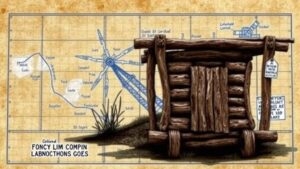Using AI to Enhance Archaeological Research by Cross-Analyzing Artifact Databases
Using AI to Enhance Archaeological Research by Cross-Analyzing Artifact Databases
Archaeology has always been a field that relies heavily on the collection and interpretation of data. With the advent of artificial intelligence (AI), researchers now have powerful tools at their disposal to enhance archaeological investigations. One promising application is the cross-analysis of artifact databases using AI algorithms, which can reveal insights that traditional methods may overlook. This article explores the role of AI in archaeological research, focusing on the methodology, benefits, and real-world applications of cross-analyzing artifact databases.
The Role of AI in Archaeology
Artificial intelligence, particularly machine learning and data mining, has become an invaluable asset in various research disciplines, including archaeology. By automating the analysis of large datasets, AI can efficiently process and identify patterns and correlations that might be missed by human researchers. For example, machine learning models can be trained to recognize different types of artifacts based on their material composition, shape, and decorative features, allowing archaeologists to categorize findings more effectively.
Methodology of Cross-Analyzing Artifact Databases
The process of cross-analyzing artifact databases with AI typically involves several critical steps:
- Data Collection: Artifacts need to be recorded in a standardized format. This data can come from various sources, such as excavation reports, museum collections, and online databases.
- Data Cleaning: It is essential to ensure that the data is free from inaccuracies and inconsistencies. This process may involve filling missing values or correcting erroneous entries.
- Feature Engineering: Relevant features, such as artifact types, dating, geographical location, and material properties, must be selected and transformed for analysis.
- Model Selection: Appropriate machine learning algorithms, such as supervised learning models (e.g., Random Forest, Support Vector Machines) or unsupervised clustering methods (e.g., K-means), are chosen based on the research question.
- Analysis and Validation: The algorithms are applied to the data, and results are validated against known historical contexts or archaeological findings to ensure accuracy.
Benefits of Using AI in Archaeological Research
The integration of AI into archaeological research presents several advantages:
- Enhanced Data Analysis: AI algorithms can process vast amounts of data in a fraction of the time it would take a human researcher, leading to faster discoveries.
- Improved Pattern Recognition: AI can often identify subtle patterns and correlations between artifacts that might not be apparent through manual analysis.
- Facilitation of Predictive Modeling: Cross-analyzing multiple databases can help establish predictive models about the distribution of artifacts across different regions and time periods.
- Accessibility of Research: AI tools can make it easier to share findings and analyses, democratizing access to archaeological insights.
Real-World Applications and Case Studies
Several notable projects illustrate the successful application of AI in archaeological research:
- Digital Antiquity: This project involves the integration of archaeological data into a centralized database that can be analyzed using AI. By cross-referencing datasets from various regions, researchers have uncovered new connections between different cultures in North America, such as the Mississippian and Puebloan societies.
- AI in Roman Archaeology: The University of Oxford used machine learning to analyze databases of Roman artifacts excavated across southern Britain. r findings revealed trade patterns and cultural exchanges frequently overlooked, enhancing our understanding of Roman influence in the region.
- Predictive Analysis in Mesoamerica: Researchers have utilized AI to analyze artifact distributions and predict archaeological site locations in Mesoamerica. By cross-referencing environmental data with existing artifact records, the model successfully identified new sites, leading to significant discoveries.
Challenges and Considerations
While the potential for AI in archaeology is vast, several challenges must be addressed:
- Data Quality: The accuracy of AI outputs heavily depends on the quality and consistency of the input data. In archaeology, data sets can often be incomplete or poorly structured.
- Interpretation of Results: AI can provide valuable insights, but human expertise is still necessary to interpret these findings within the cultural and historical context.
- Ethical Considerations: The use of AI in archaeological contexts raises ethical questions regarding data ownership, representational biases, and the implications of predictive modeling.
Conclusion
The integration of artificial intelligence into archaeological research, particularly through cross-analyzing artifact databases, offers the potential to transform our understanding of past human behaviors and cultural interactions. By enhancing data analysis, improving pattern recognition, and enabling predictive modeling, AI presents new opportunities for archaeologists to explore and interpret historical data. But, as this field evolves, it is equally crucial to address the associated challenges, ensuring ethical practices and the accurate interpretation of AI-generated insights. Continued collaboration between archaeologists and data scientists will be essential for maximizing the benefits of AI in archaeology.

